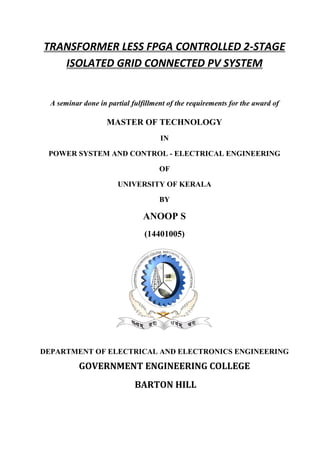This document summarizes a seminar report on a proposed transformer-less, two-stage, grid-connected photovoltaic system. The system consists of solar panels, a boost converter-based MPPT charge controller in the first stage to regulate the variable output of the solar panels. A neutral point clamped inverter is used in the second stage to convert the DC output to AC for connection to the grid. The neutral point clamped inverter offers improved output waveforms with lower harmonic distortion compared to conventional inverters, allowing for a smaller filter size. The proposed topology aims to improve efficiency and reliability while eliminating the need for an isolation transformer.


















